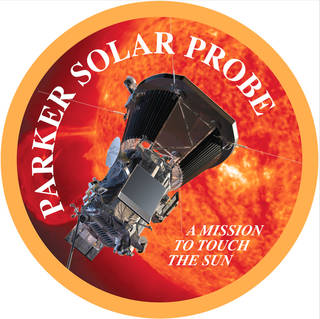A Russian guy boasts, “Next year we will put a man on the Moon“.
An American boasts, “That’s no big deal, we have done that. Next year we will put a man on Mars“.
Over in the corner a chap from an obscure tiny nation perks up and explains that they will go one further and launch a mission to the sun. Everybody listening looks dumbfounded. Somebody plucks up the courage to point out that the sun would burn them up and asks him how that can possibly work.
He explains, “That’s easy, we will go at night“.
… and yet now NASA really are going to launch a mission to the Sun.
Solar Probe Plus – The Parker Solar Probe
Originally named, “Solar Probe Plus”, it was formally renamed as the “Parker Solar Probe” on 31st May in honor of astrophysicist Eugene Parker. The press release explains why …
In 1958, Parker — then a young professor at the university’s Enrico Fermi Institute — published an article in the Astrophysical Journal called “Dynamics of the interplanetary gas and magnetic fields.” Parker believed there was high speed matter and magnetism constantly escaping the sun, and that it affected the planets and space throughout our solar system.
This phenomenon, now known as the solar wind, has been proven to exist repeatedly through direct observation. Parker’s work forms the basis for much of our understanding about how stars interact with the worlds that orbit them.
What is quite fascinating about that is that this is a first. On every previous occasion that NASA has named something to honour somebody famous, it has been done after they have died. This is different, Parker himself is alive and well and was there when it was announced …
“This is the first time NASA has named a spacecraft for a living individual,” said Thomas Zurbuchen, associate administrator for NASA’s Science Mission Directorate in Washington. “It’s a testament to the importance of his body of work, founding a new field of science that also inspired my own research and many important science questions NASA continues to study and further understand every day. I’m very excited to be personally involved honoring a great man and his unprecedented legacy.”
“The solar probe is going to a region of space that has never been explored before,” said Parker. “It’s very exciting that we’ll finally get a look. One would like to have some more detailed measurements of what’s going on in the solar wind. I’m sure that there will be some surprises. There always are.”
It is of course wholly appropriate to pick him. In the 1950s he also theorized an explanation for the superheated solar atmosphere, the corona, which is — contrary to what was expected by the laws of physics — hotter than the surface of the sun itself. This now is where that probe is going to go to.
Heliophysics
The NASA Mission page describes it as follows …
Parker Solar Probe will swoop to within 4 million miles of the sun’s surface, facing heat and radiation like no spacecraft before it. Launching in 2018, Parker Solar Probe will provide new data on solar activity and make critical contributions to our ability to forecast major space-weather events that impact life on Earth.
OK, let’s expand upon that a bit. The precise launch window that has been penciled in is 31st-July to 19th-Aug 2018, so we are roughly one year away.
Having a better understanding of space weather is a big deal. Our increasing dependence upon technology makes us far more vulnerable to a possible solar event that could potentially not only take out the electricity grid but also fry the electronics within orbiting satellites and obliterating GPS.
However, this is not just about better forecasting, it is of course a voyage of discovery. Why is the sun’s corona so much hotter than its surface? There are various ideas, but we just don’t know, and so packing all the latest technology into a probe then sending it there is the road to actually finding out.
A few More Interesting details
It will be the fastest human object ever deployed. By using Venus as a gravitational break, it will dive into and out of the corona at about 430,000 mph … not once, but as many as 24 times over seven years, and with each pass move in closer.
“I like to call it the coolest hottest mission under the sun,” – Nicola J. Fox, the mission scientist
Yep, I’ll second that.
Links
- Press Release renaming it the “Parker Solar Probe”
- Eugene Parker’s Wikipedia page where you can read all about him (he is 89 and is currently the Distinguished Service Professor Emeritus, Department of Astronomy and Astrophysics at the University of Chicago)
- The official Parker Solar Probe site – it includes a countdown clock to launch and is pack with details.
- The official twitter account for the probe is here
Images
Tweets
Parker Solar Probe will launch in 2018, eventually traveling closer to the sun than any human-made object in history https://t.co/gDQOdAlFkt pic.twitter.com/9fYvSiYJhV
— NASA Sun & Space (@NASASun) May 31, 2017
Parker Solar Probe, our first mission to travel to the sun, is named after pioneering physicist Gene Parker: https://t.co/AhY9KVSSZS pic.twitter.com/PCI65Oq1yI
— NASA Sun & Space (@NASASun) May 31, 2017
